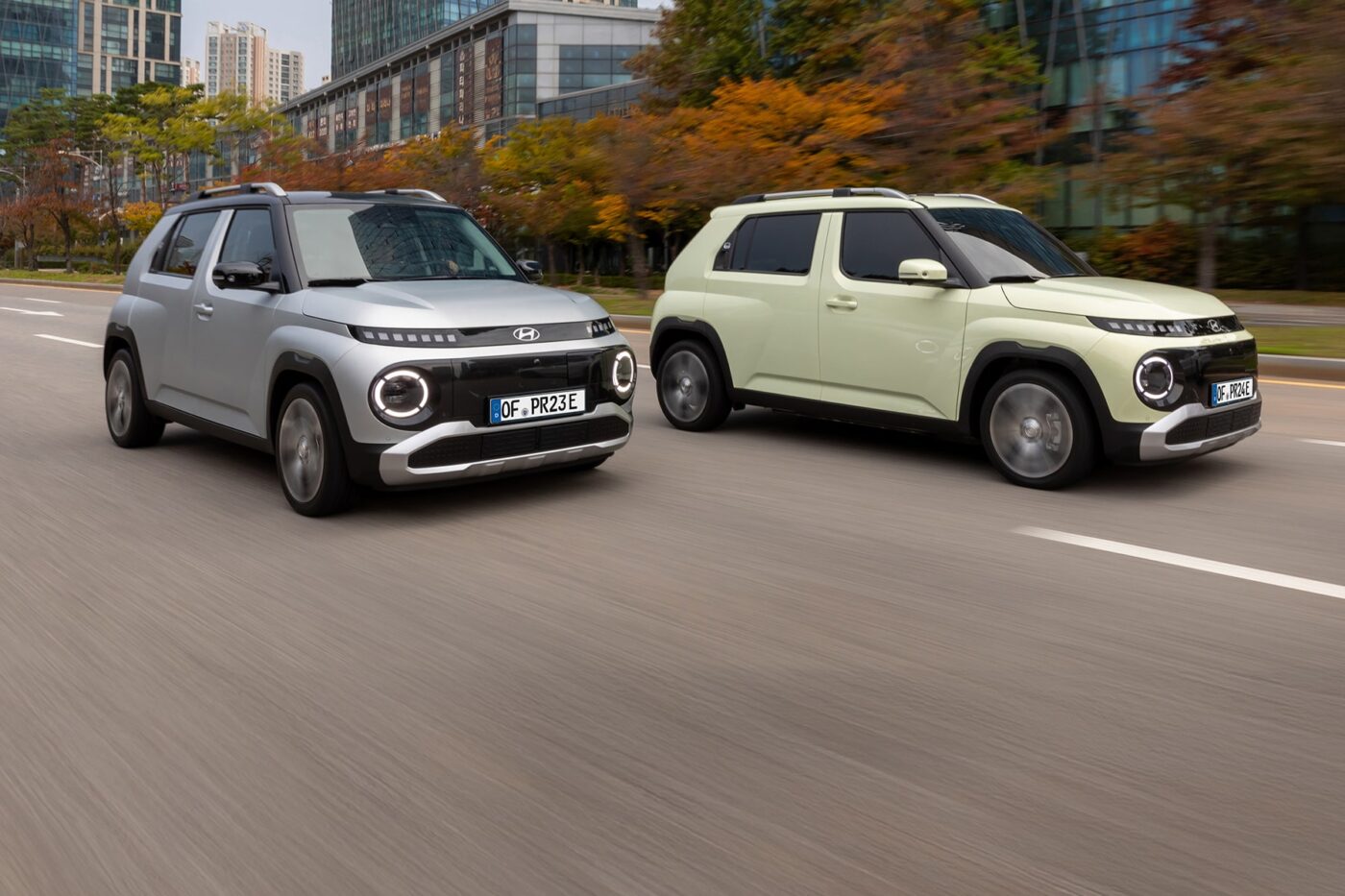
First drive in the Hyundai Inster: an overall successful package
There is no question that the number of ‘affordable’ small electric cars is growing. Citroën launched its ë-C3 with a starting price of 23,300 euros, Stellantis sister brand Fiat offers the Grande Panda from 24,990 euros – and there are also larger and slightly more expensive models such as the Citroën ë-C3 Aircross or the Opel Frontera Electric that are built on the same ‘CMP Smart Car’ platform. Renault currently has the Renault 5 on offer from 27,900 euros, with a 24,900 euro trim to follow this year.
With an entry-level price of 23,900 euros, or 25,400 euros with the larger battery, Hyundai positions its new Inster precisely in this segment. However, if you compare not only the base prices but also the equipment lists, you will quickly notice some differences. A sat nav? The ë-C3 for 23,300 euros does not have that, nor does it have automatic air conditioning. The Renault 5 for less than 25,000 euros will not be able to fast-charge. It it can only charge with alternating current. The Stellantis models’ potentially temperature-sensitive LFP battery cannot be preconditioned, and the carmaker does not offer a battery heater. That means that technical data, which is quite respectable on paper, can look very different in everyday winter use. The Hyundai Inster, on the other hand, comes with a sat nav for 23,900 euros (including a rear camera), it can be charged at the the DC charger and battery preheating is an option (it only comes standard in the top-of-the-range trim ‘Prime’). So is the Inster the best deal?
We don’t want to be so hasty in our judgement, so we get behind the wheel first. According to Hyundai, the Inster has an SUV look due to customer demand and is thus almost ten centimetres higher than the Renault 5, for example, which is immediately noticeable. And even though I am 1.85 metres, there is still more than a hand’s breadth of space above my head. You don’t even notice that, at just 1.61 metres, the Inster is very narrow and is thus naturally a little narrower inside. It is definitely not cramped.
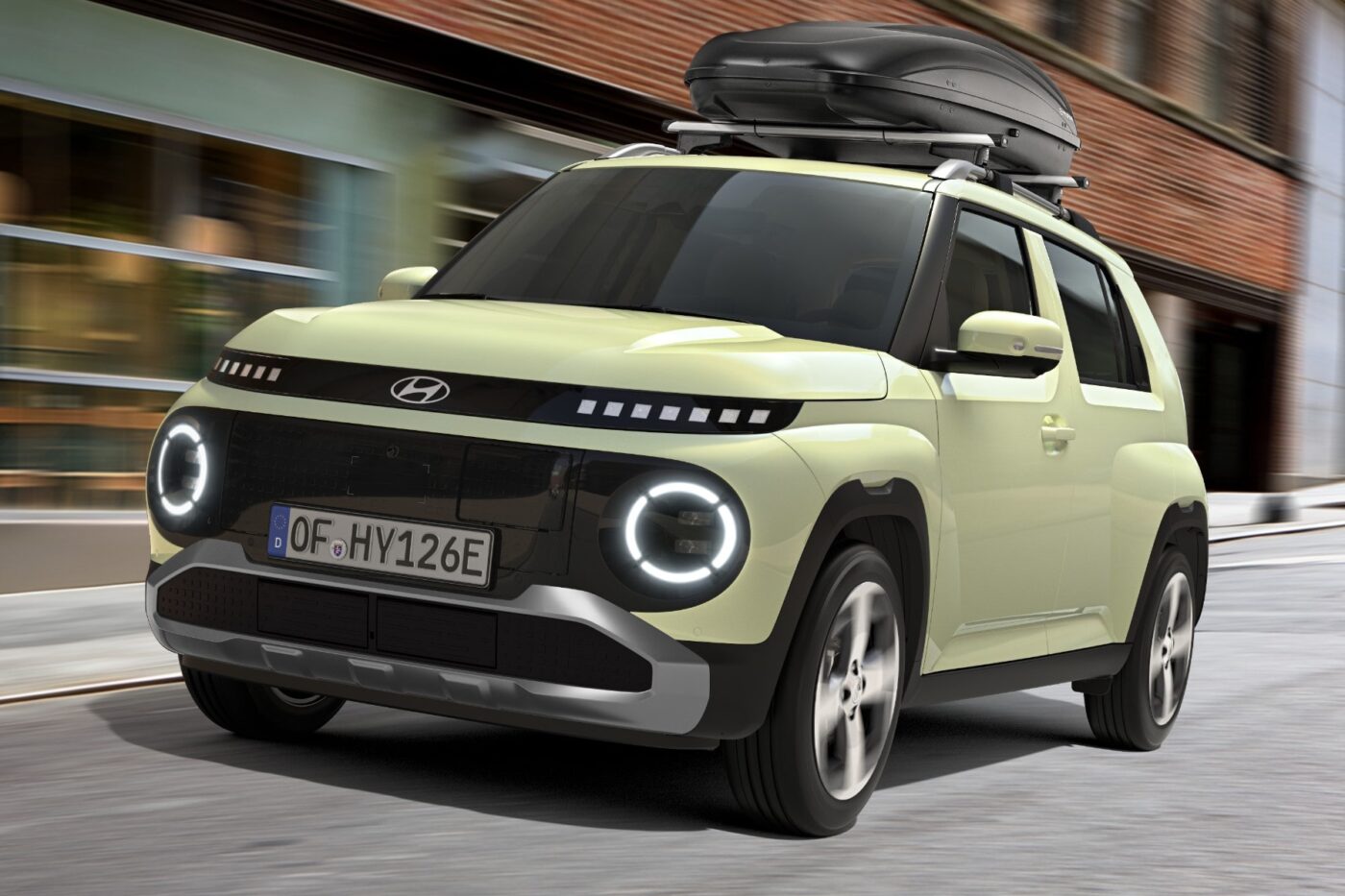

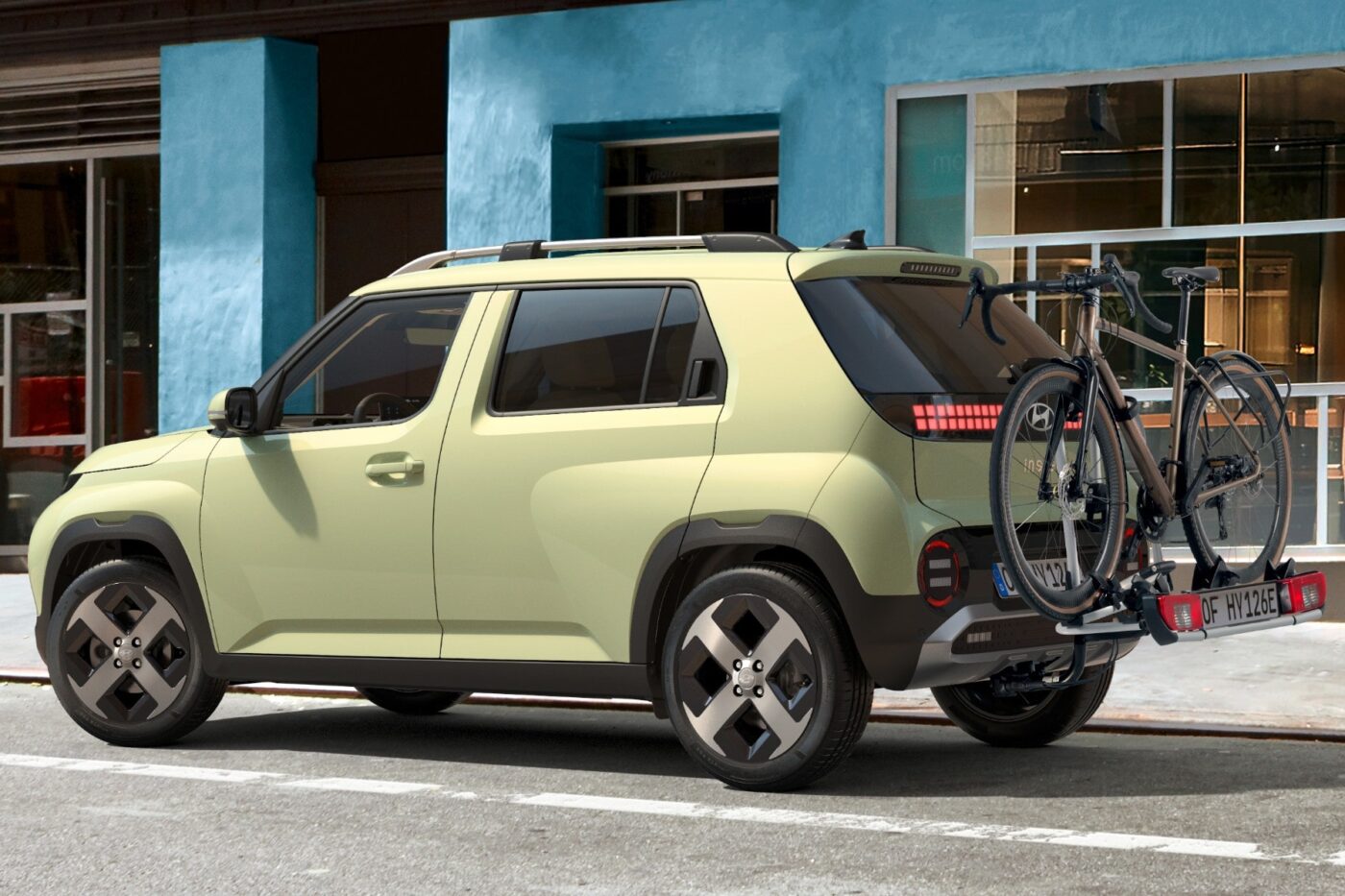
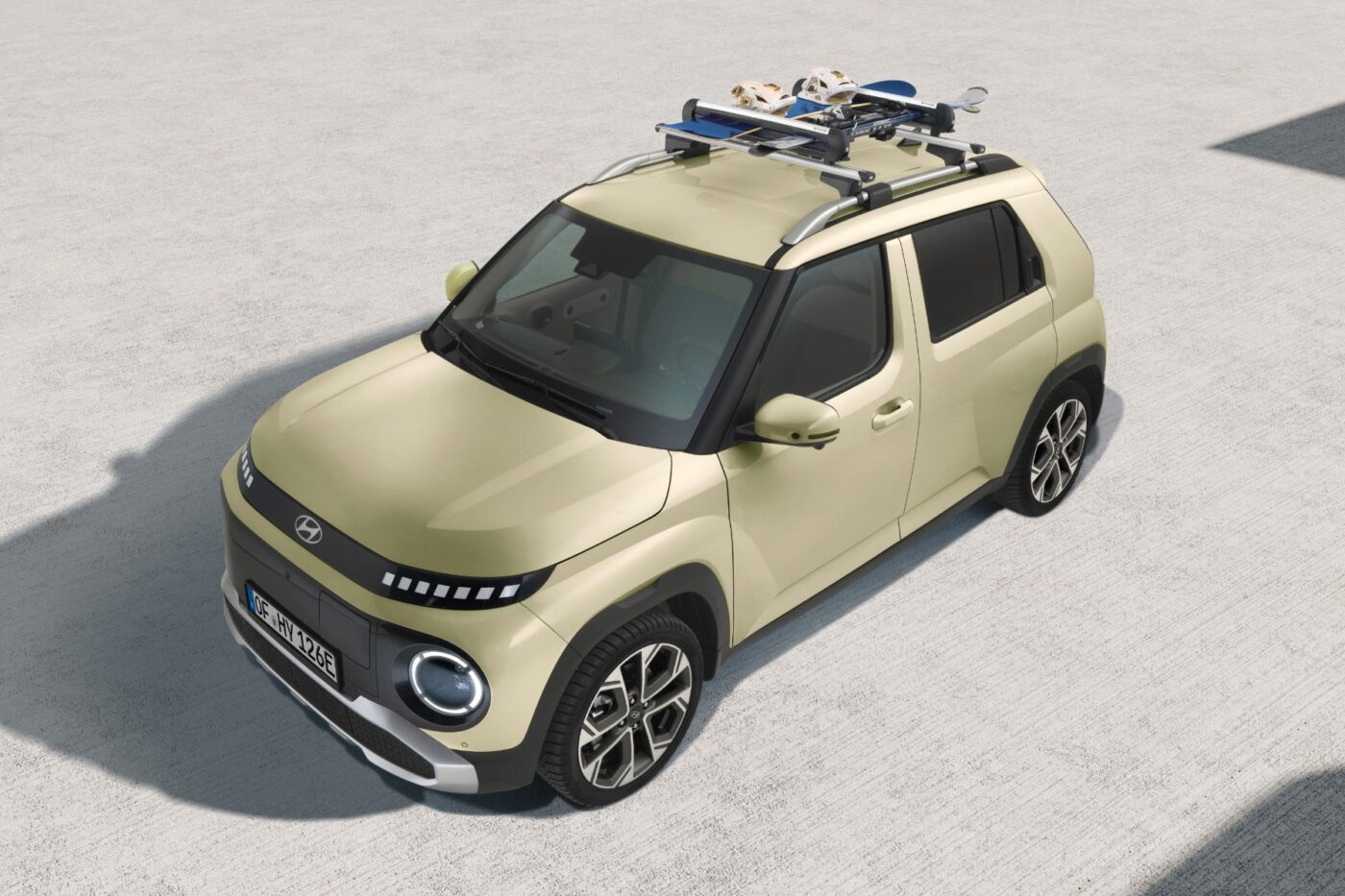
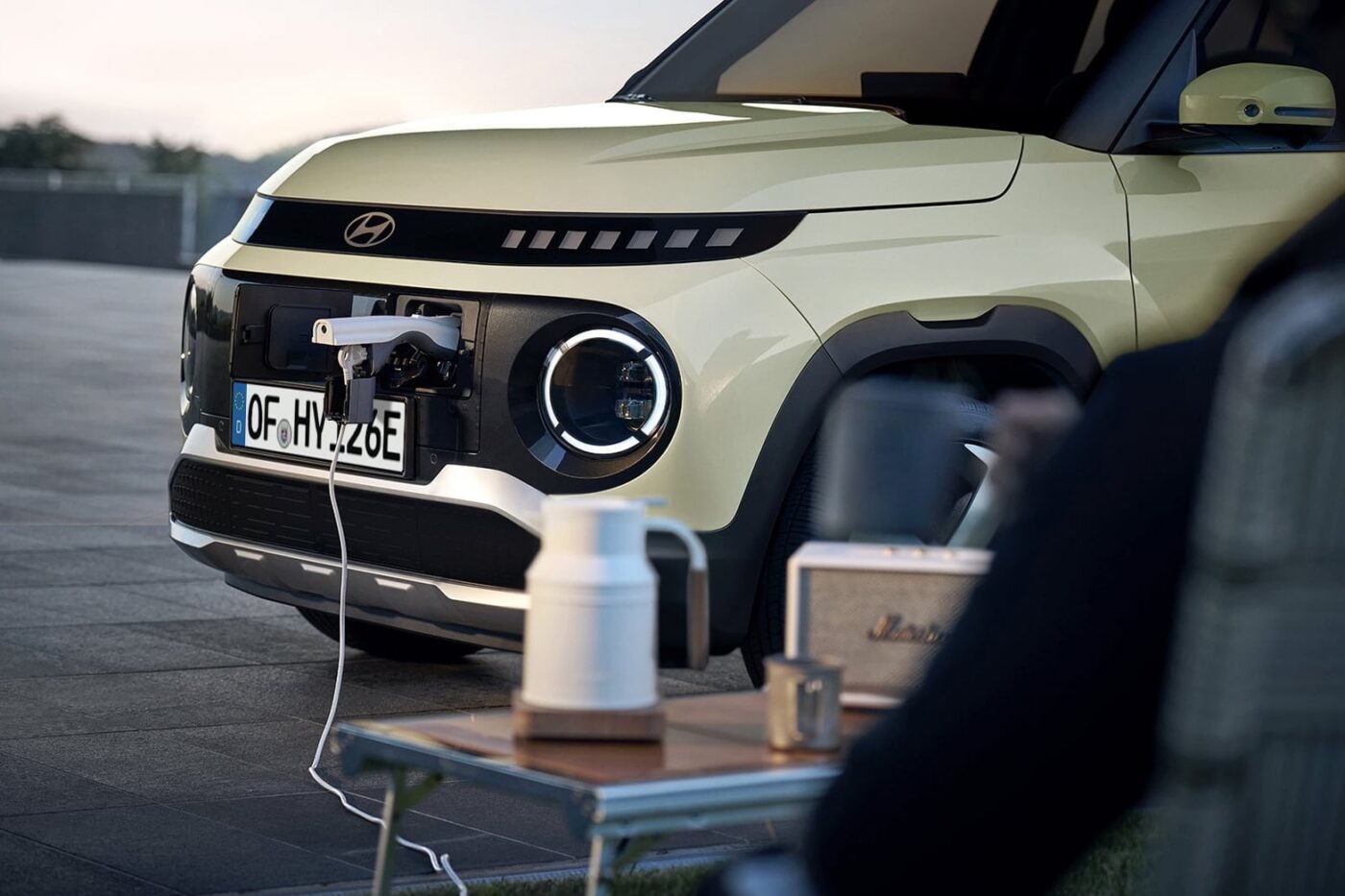
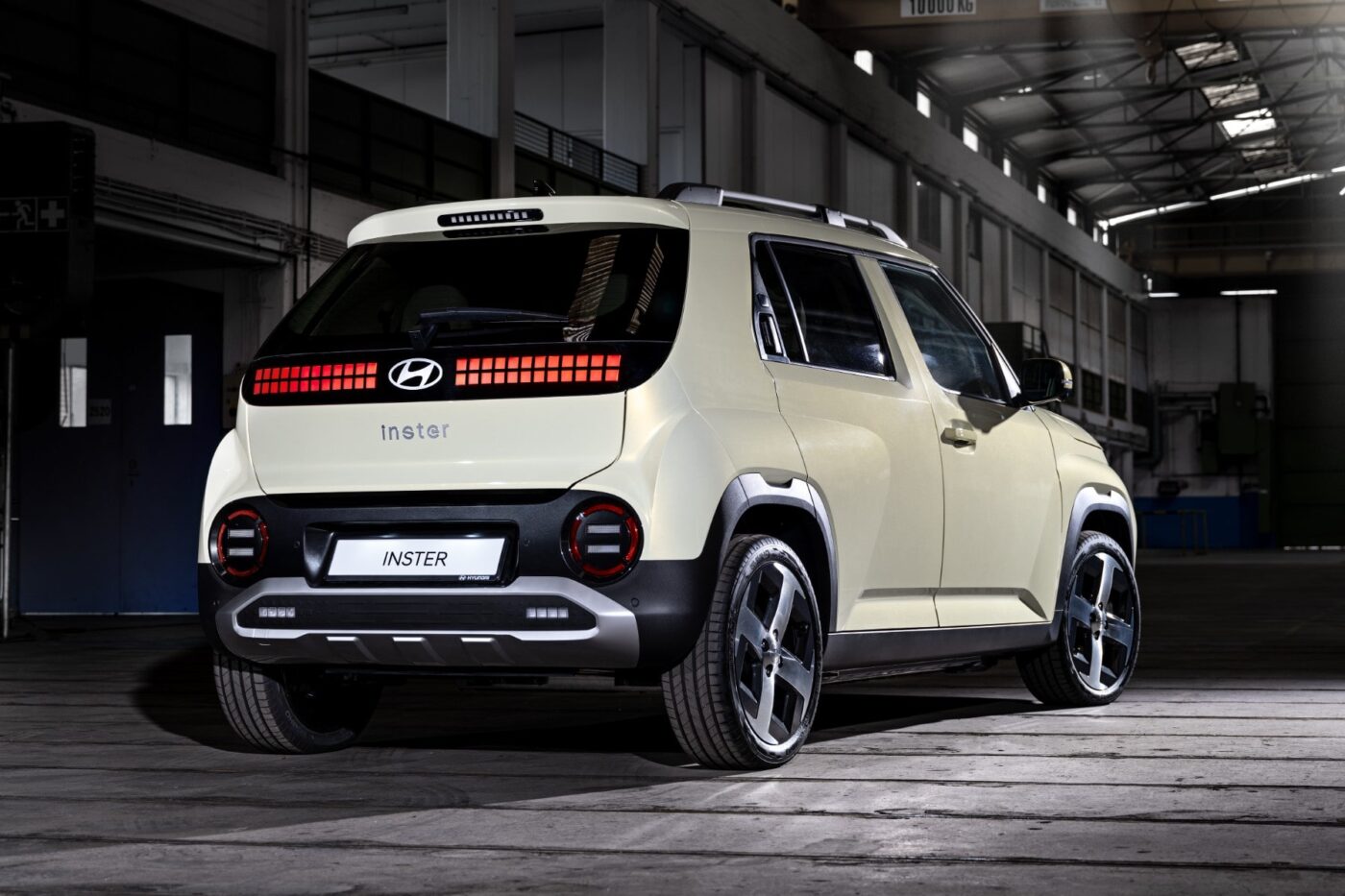
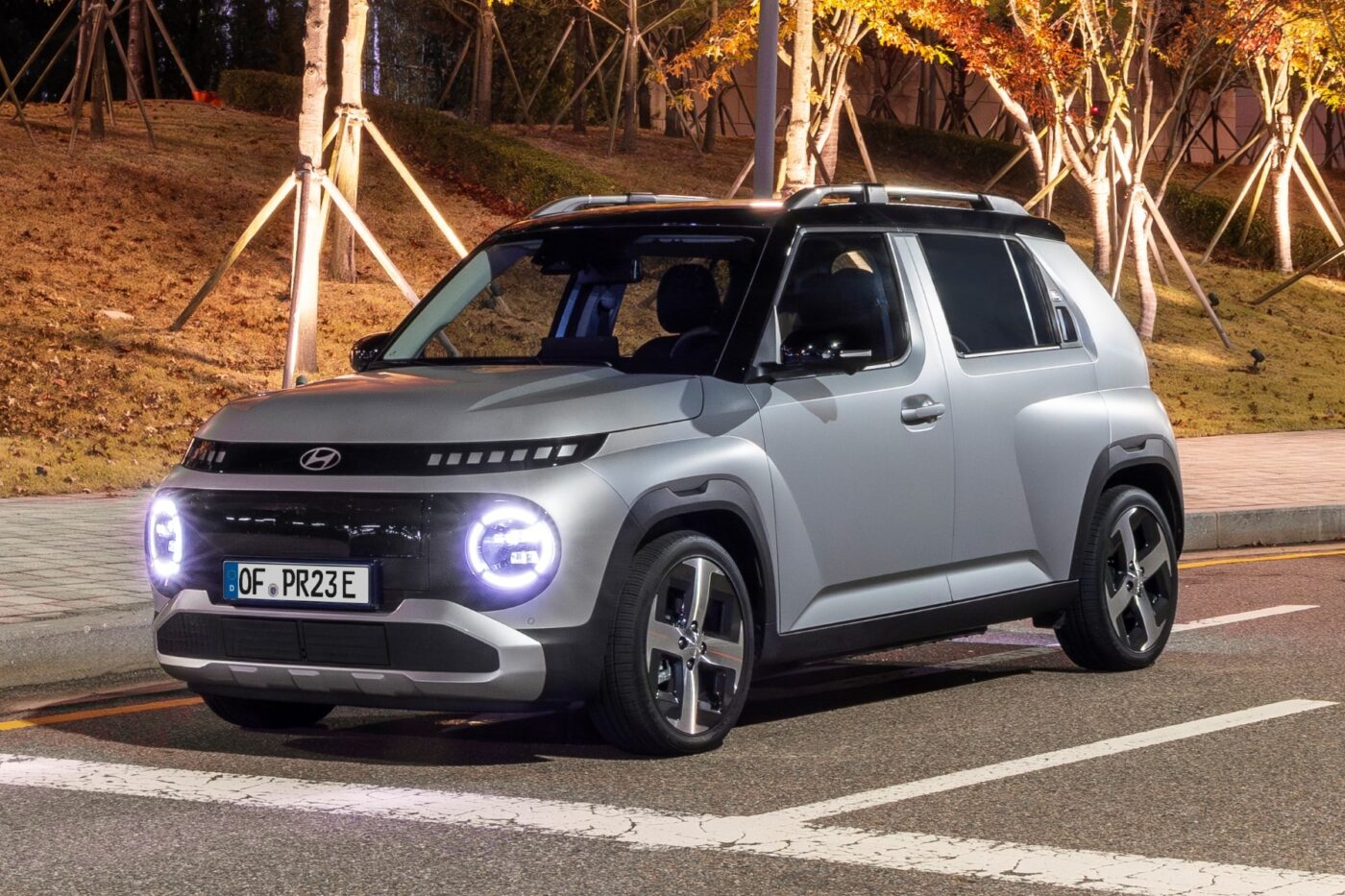
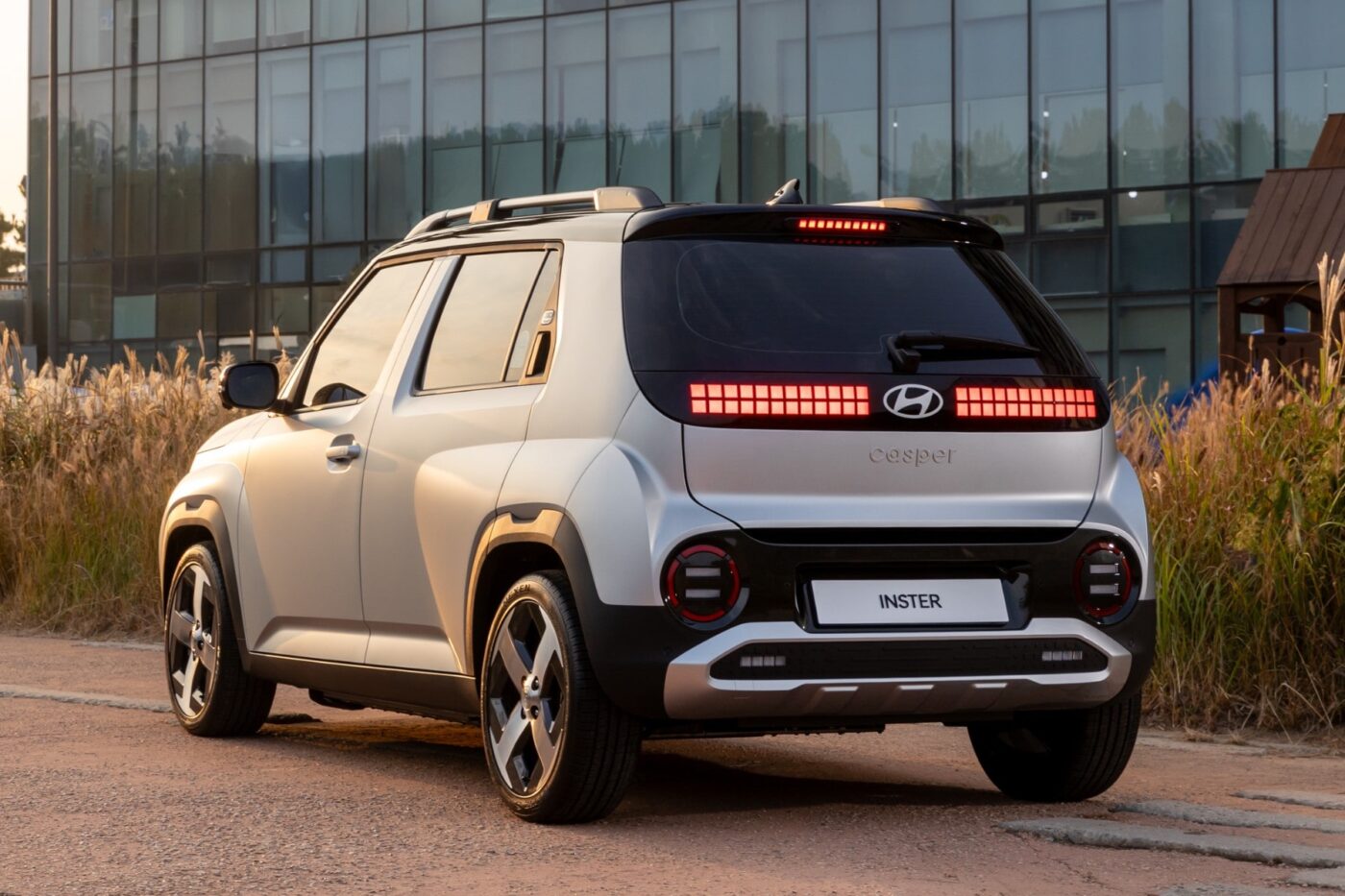
Anyone who has already driven a current Hyundai or Kia will quickly find their way around the Inster. Even the entry-level ‘Select’ trim includes a multifunction steering wheel with all kinds of buttons and toggle levers (real levers, not touch surfaces!), a driving mode selector and shift paddles to control the recuperation. In the top-of-the-range ‘Prime’ version, even the four dots on the airbag cover (they stand for the Hyundai H in Morse code) are illuminated, as in the larger models, and can (roughly) display the charge level, for example. Two 10.3-inch displays (one for the driver, one as a touchscreen for the infotainment) are also already on board the ‘Select’, as are several assistance systems and generally more equipment. And the mixture of buttons and touch controls quickly makes sense.
Of course, the interior is dominated by hard plastic. However, that is not only the case with the competition, but also in much more expensive models. Nevertheless, there are also softer plastics and, above all, elements that liven up the design. The basic version has fairly simple seats with robust fabric upholstery, while the materials in the top-of-the-range ‘Prime’ model are much higher quality. The ‘Select’ trim only a shelf in the centre console. But all variants from the ‘Trend’ trim upwards have an inductive charging tray for smartphones. Such comparisons are possible because Hyundai not only brought the high-quality top model to the event in Frankfurt for the first test drives – as is customary in the industry – but it showed all three trim levels. Only the Inster Cross, an off-road-inspired model, was missing.
266 km range with a full battery in the display
Enough preamble, let’s hit the road. We set off from the south of Frankfurt in the direction of Darmstadt. We drove the ‘Prime’ variant, i.e. with the large 49 kWh battery and an 85 kW electric motor under the bonnet. Incidentally, the fully charged car displayed a range of 266 kilometres when we set off; according to the WLTP standard, 370 kilometres should be possible. However, this was also due to the outside temperatures of just two to four degrees above freezing.
On the motorway, it becomes clear that you hardly miss anything in the Inster – it is just a little smaller than the previous electric Hyundais. And that is meant both positively and negatively: with adaptive cruise control, automatic lane changes and the camera displays of the blind spot warning system when turning, you certainly don’t feel like you’re in an economy model. However, the Inster also adopts the somewhat more annoying features of other Hyundai models, namely the very precise speed limit warning and attention assistant, which monitors the driver with a small camera mounted on the steering column and intervenes too early. In other words: even in the Inster, some assistant keeps beeping at you, even though you only wanted to adjust the air conditioning.
At first glance, the motorway consumption of 20.3 kWh/100 km seems a little high, but this was probably due to the short duration of the first test drive. Before the start of the journey, the vehicles stood outside for some time at two degrees, so the interior had to be warmed up during the first few kilometres. Even though the ‘Prime’ trim level comes standard with a heat pump, it requires some energy to get from two to 20 degrees. And the light sleet certainly didn’t reduce consumption either. In other words, with higher temperatures and on a longer route, even motorway consumption should fall below the 20 mark. The Inster accelerates well up to 120 kph, but up to the top speed of 150 kph (140 kph with the small battery) it becomes a little sluggish.
We then chose country roads and city traffic for the return journey to Frankfurt. Consumption dropped noticeably at lower speeds, and the onboard computer displayed 16.3 kWh/100 km over city and country roads despite the adverse conditions. After 67 kilometres, including the motorway stage, the total was 17.5 kWh/100 km. The 49 kWh energy content of the battery is a gross value; Hyundai does not communicate the usable net energy content. If this is estimated at 45 kWh, our test consumption would result in a real range of 257 kilometres – quite close to the 266 kilometres displayed by the onboard computer at the start of the journey. In fact, our test car even assumed a slightly longer range: After 67 kilometres, the onboard computer still estimated a remaining range of 217 kilometres.
That means the Inster won’t be a perfect long-distance car, but it will still take to the motorway. In my opinion, it is important that Hyundai not only installs a sat nav (which can admittedly be quickly replaced by Google Maps or similar services), but that the route guidance also includes charging planning. If you usually drive your small electric car around known charging points in the city, your EV will provide you with crucial information if you need to travel a longer route. However, the function has not yet been implemented perfectly, as the Inster plans its routes very carefully: with a range of 266 kilometres displayed, you might think that the 400 kilometres between Frankfurt and Munich can be covered with one or at most two charging stops. In fact, the Inster (in the wintry conditions of our test drive) needs three charging stations to cover this distance. It will undoubtedly get you to Munich, but with manual planning you may reach your destination a little faster.
Optionally with battery heating and heat pump
Even under even more adverse conditions or with a need for speed, the Inster should be able to achieve a real range of 200 kilometres with the 49 kWh battery. That was already possible with a BMW i3 120 Ah with a 42.2 kWh battery, but the car was significantly more expensive at the time and could not charge as quickly. With the Inster, the charging power is very close to the drive power of 71 or 85 kW. It should fill the battery from ten to 80 per cent in around 30 minutes. Not a top value, but still acceptable.
However, another feature is likely to be much more important in everyday life: The Inster can theoretically achieve its charging power consistently – a practical test is still pending. Thanks to the battery heater, the battery can be preconditioned for fast charging and (with a little lead time) offers optimum performance at the charging station. I am familiar with the lower charging performance of the i3 in cold weather. There is hardly any experience with the new Stellantis models with LFP batteries, but they are likely to suffer a noticeable loss of performance. The Hyundai, with its NMC cells, is inherently less sensitive in this respect. The so-called ‘efficiency package’ for 1,000 euros (standard with ‘Prime’) includes the heat pump and battery heater. Anyone who charges a lot at fast chargers or wants to preheat the car efficiently in winter using the app should consider this option!
The Inster also offers some unique features in the segment in other areas: for example, it is vehicle-to-load capable, meaning it can supply external devices with up to 3.0 kW via a 230-volt socket in the interior or the V2L adapter familiar from other Hyundais via the charging port. From the ‘Trend’ trim level upwards, the rear seat can also be moved forwards or backwards by eight centimetres – the right and left seats independently of each other. But even in the standard setting, I was able to fit comfortably behind the driver’s seat at the aforementioned 1.85 metres. The sliding rear bench seat and folding backrests can also be used to increase the load space. There are between 280 and 351 litres if the rear seats are still to be used. If these are folded down, up to 1,059 litres fit into the Inster.
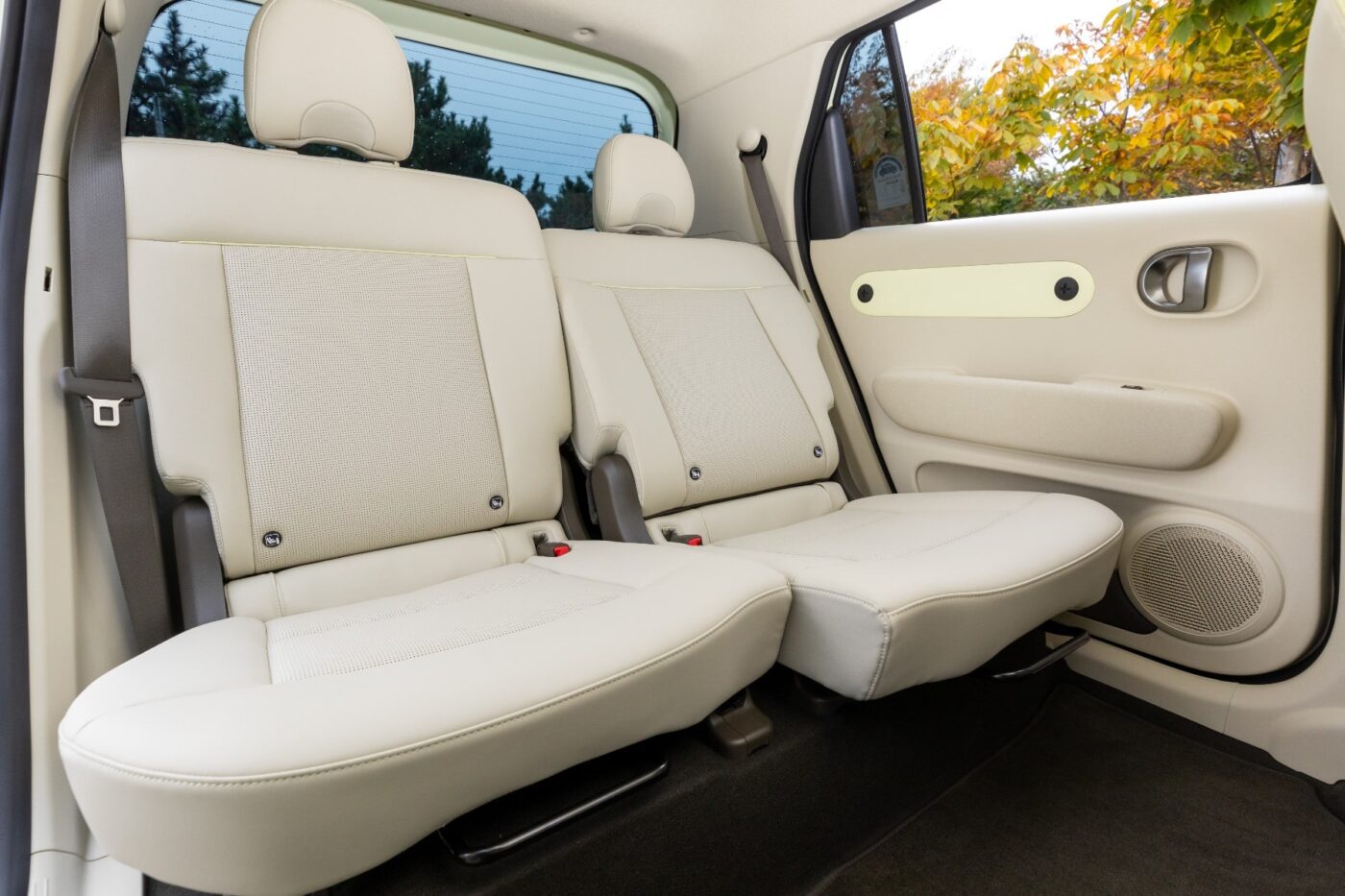
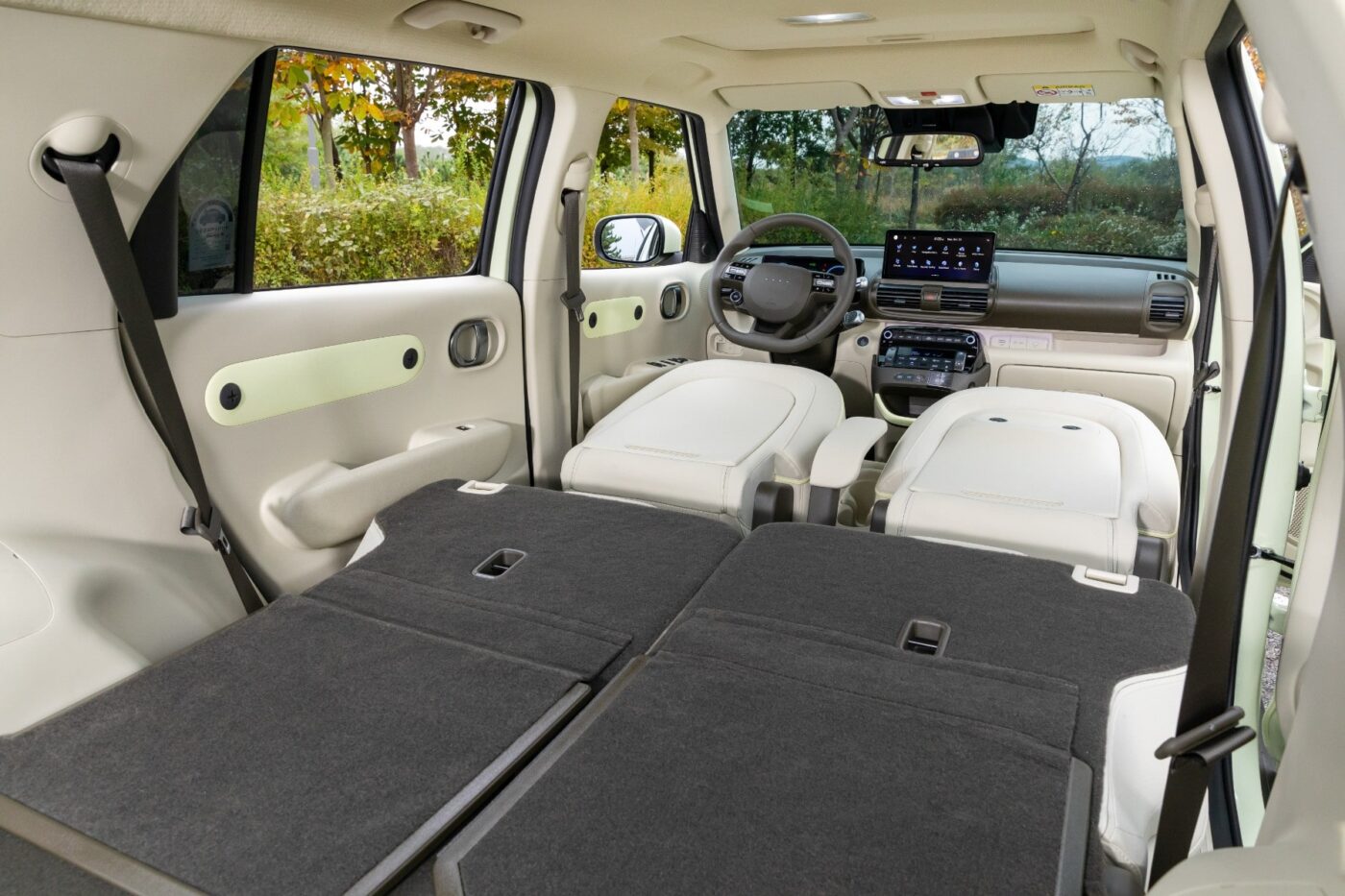
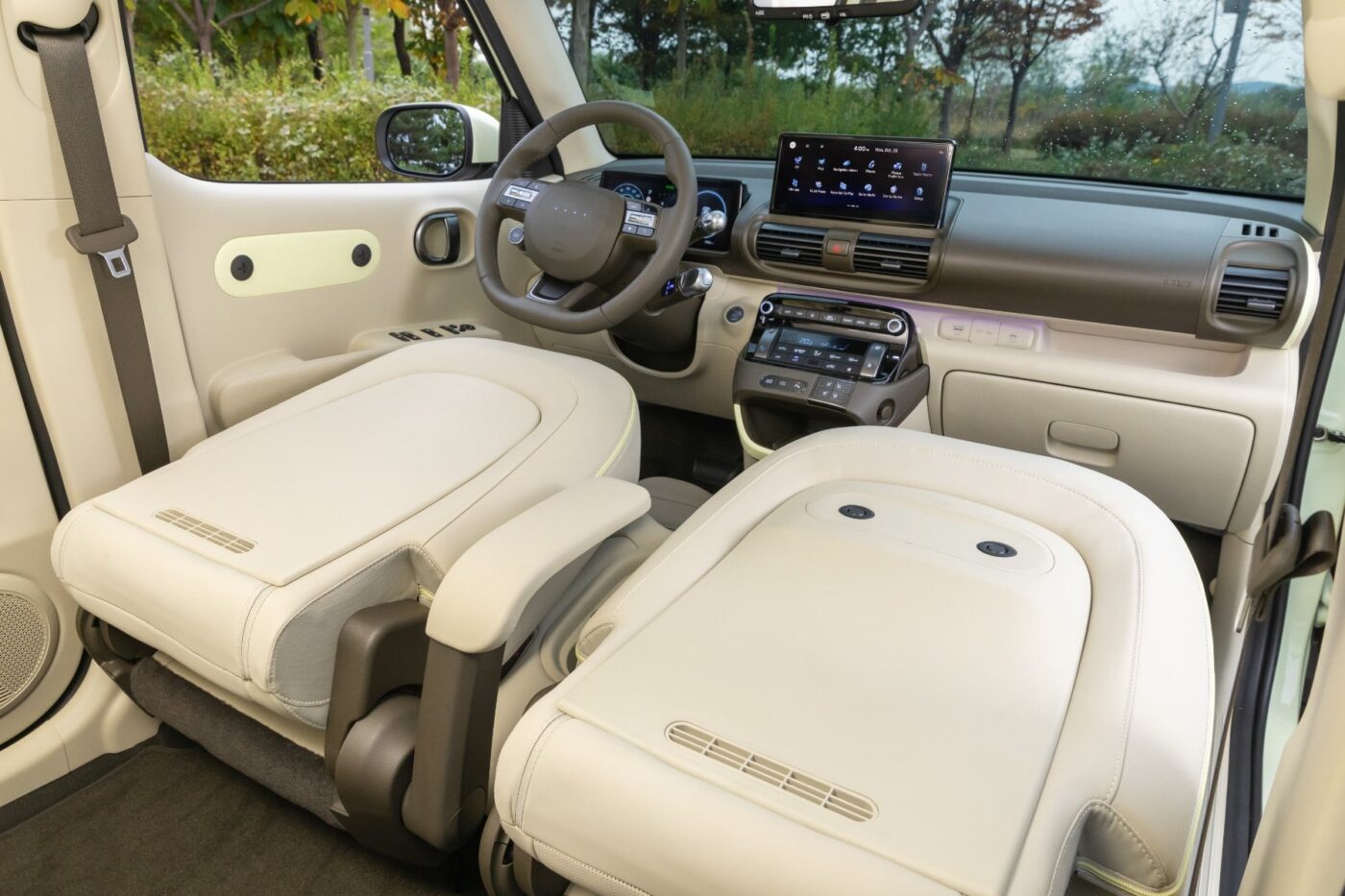
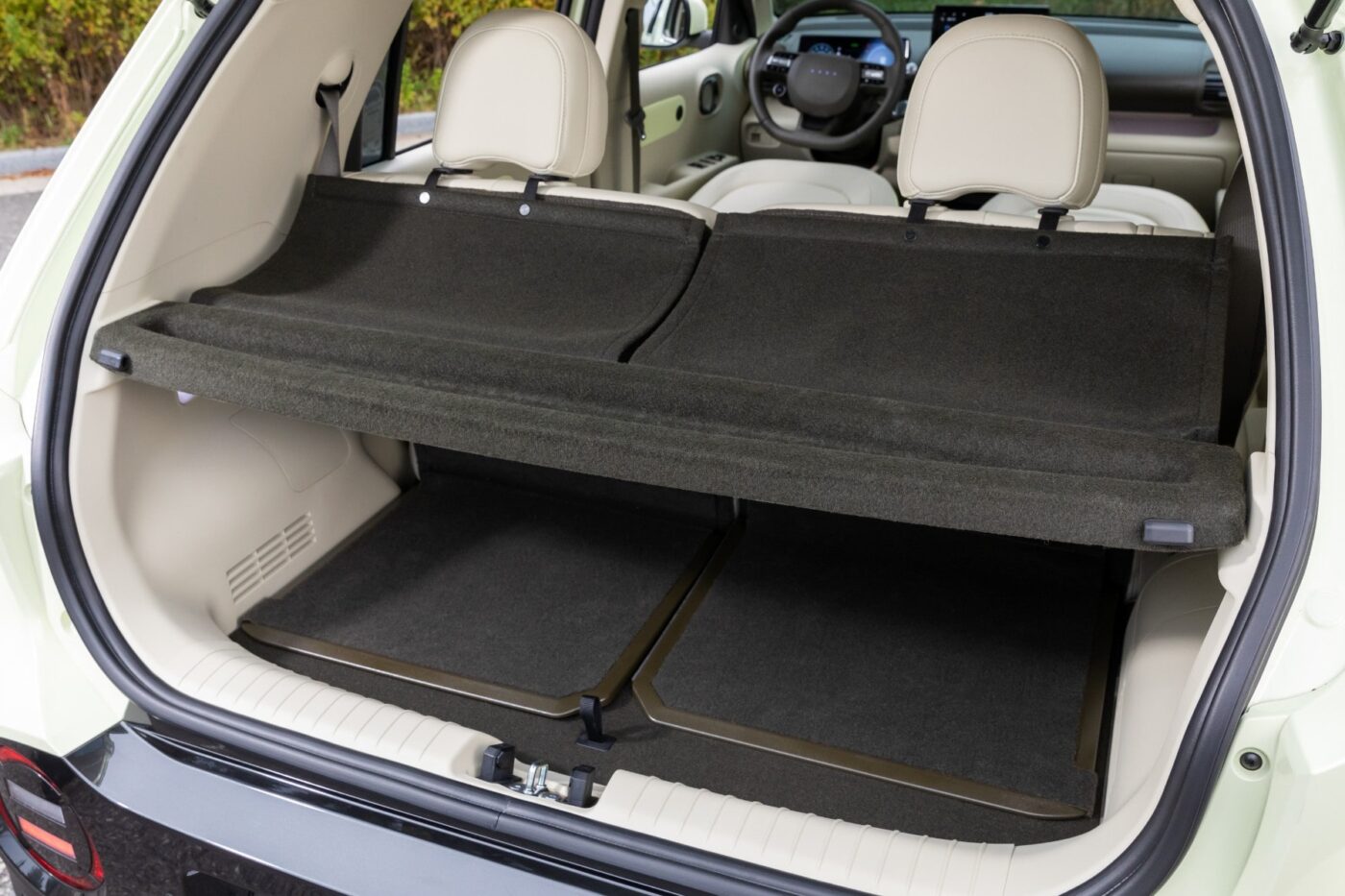
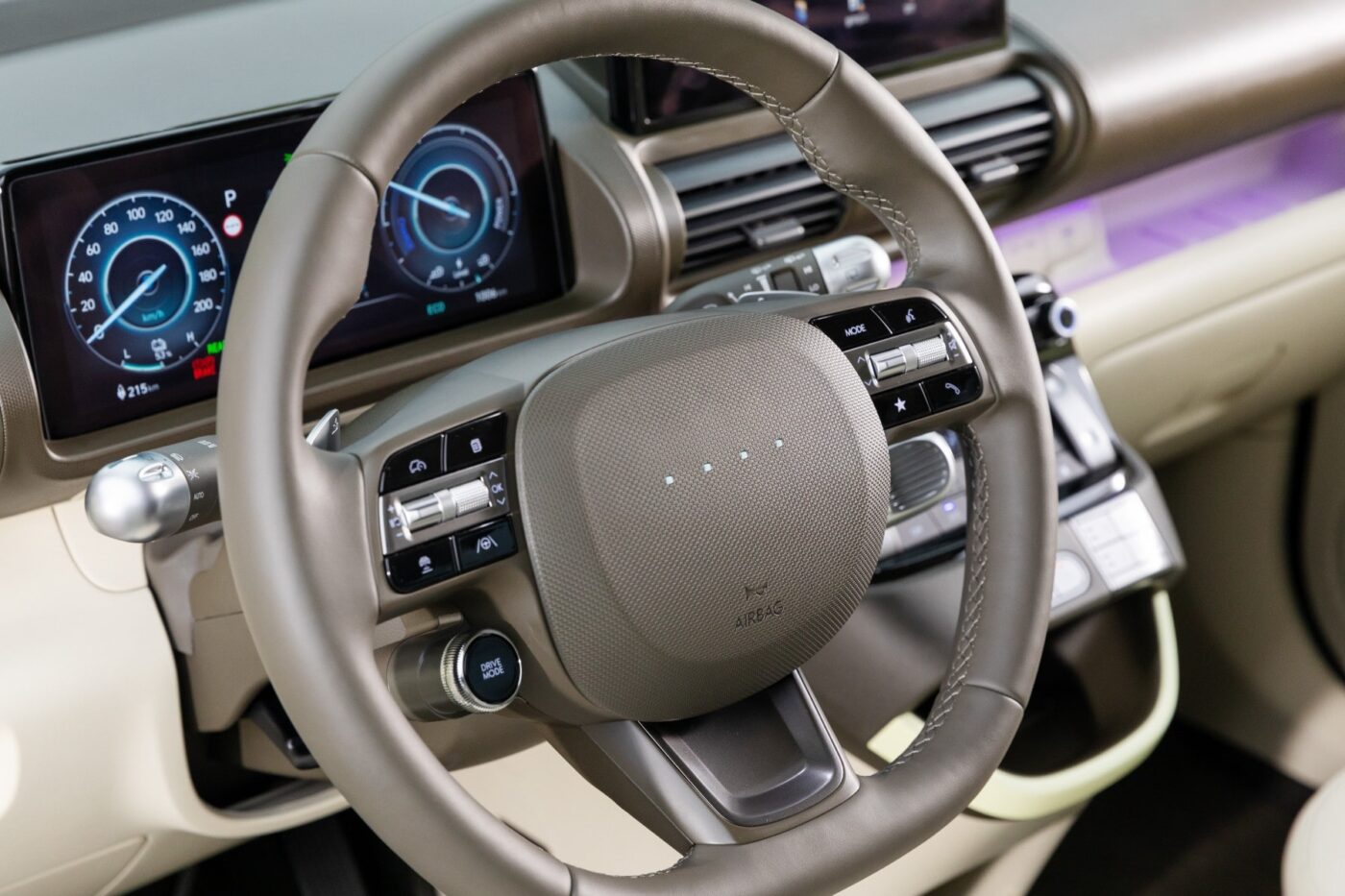
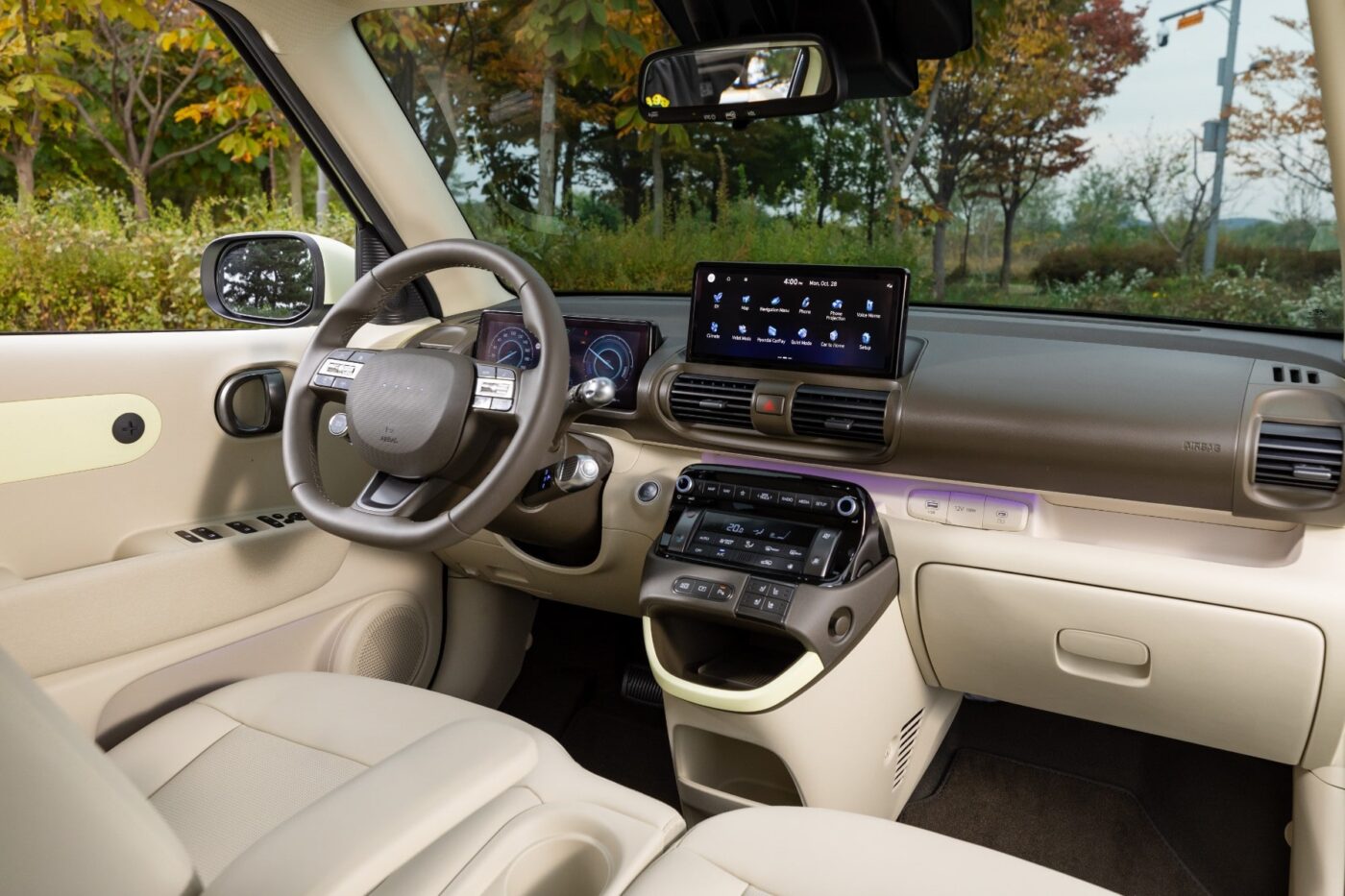
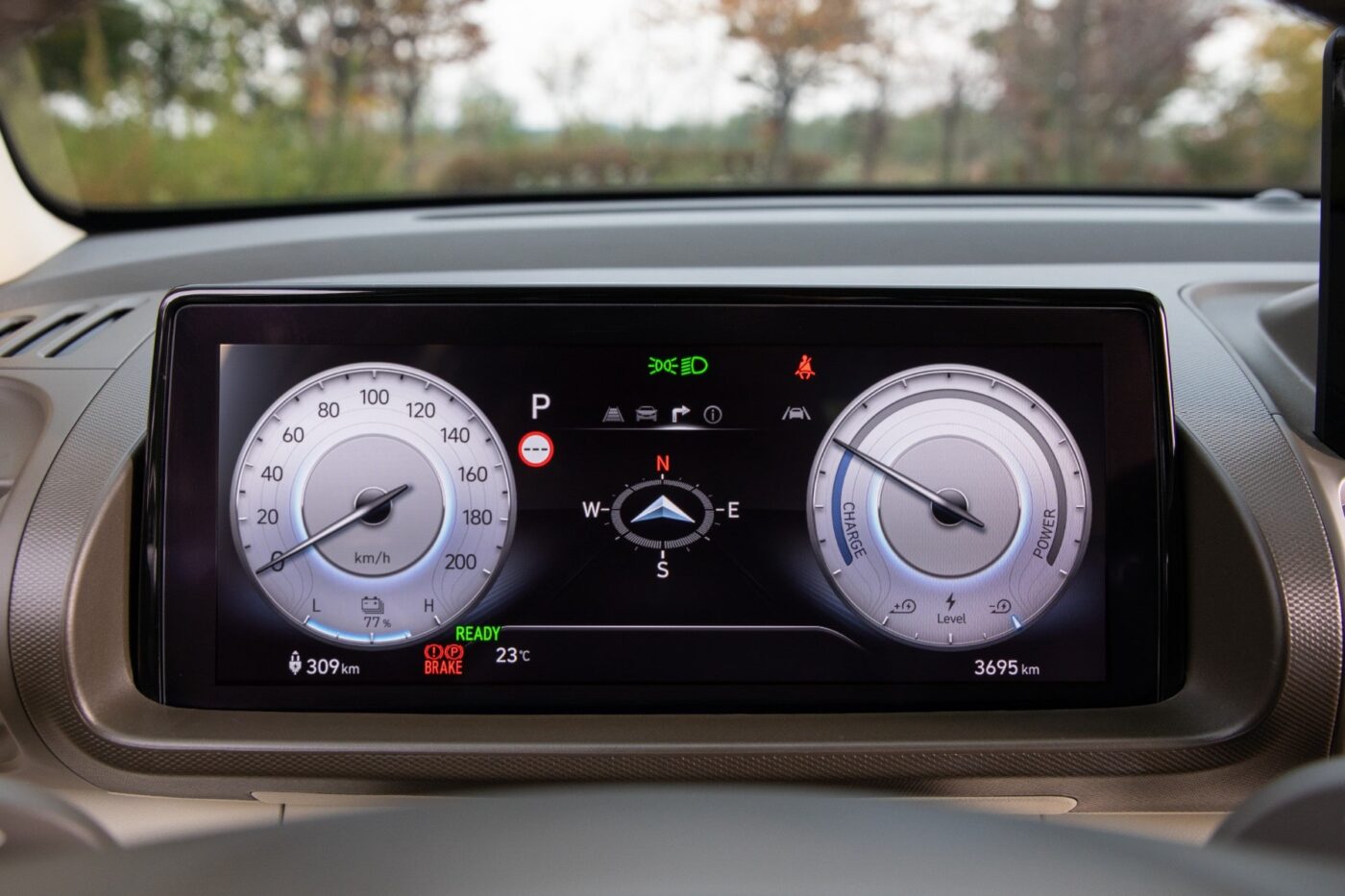
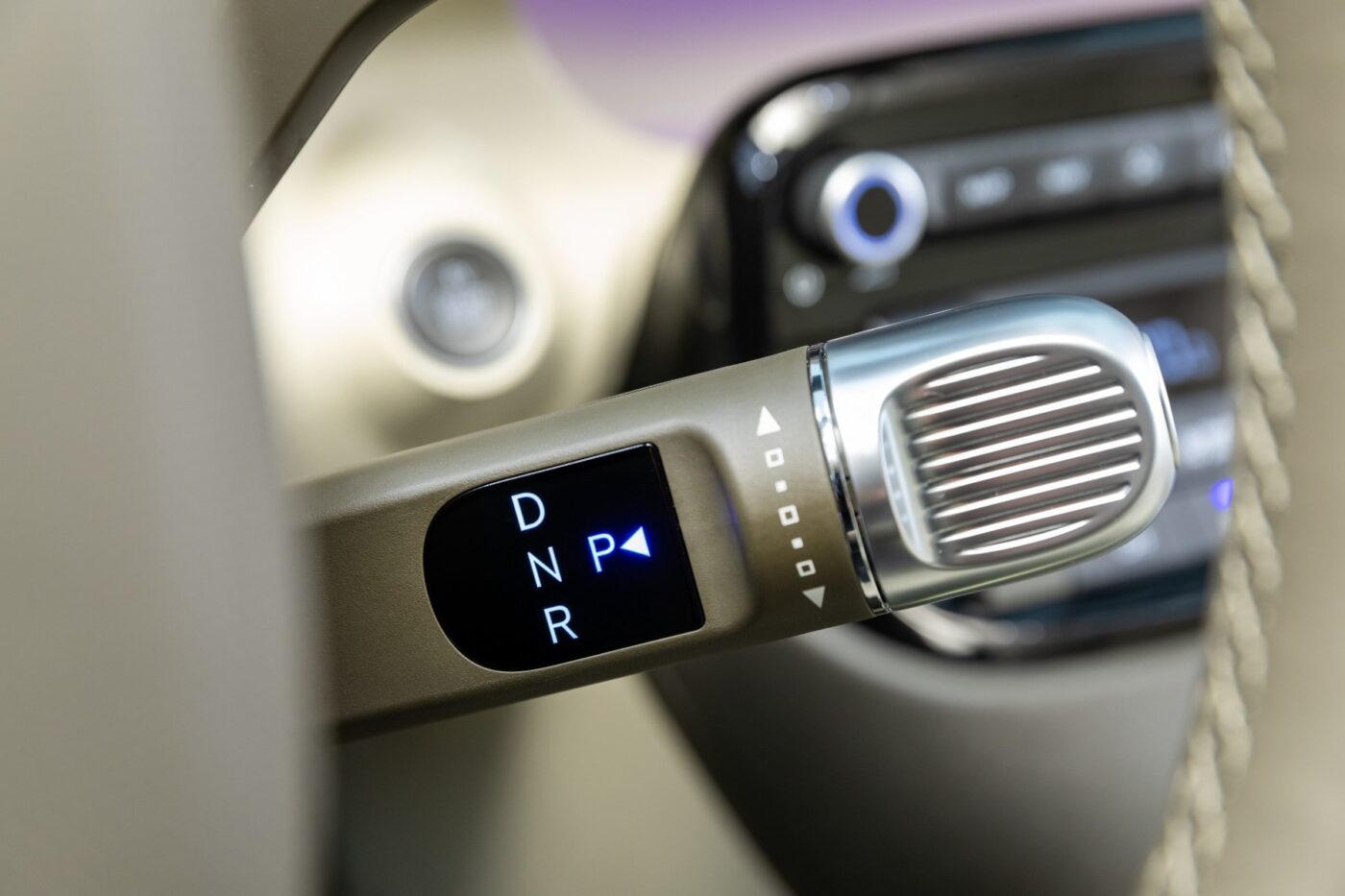
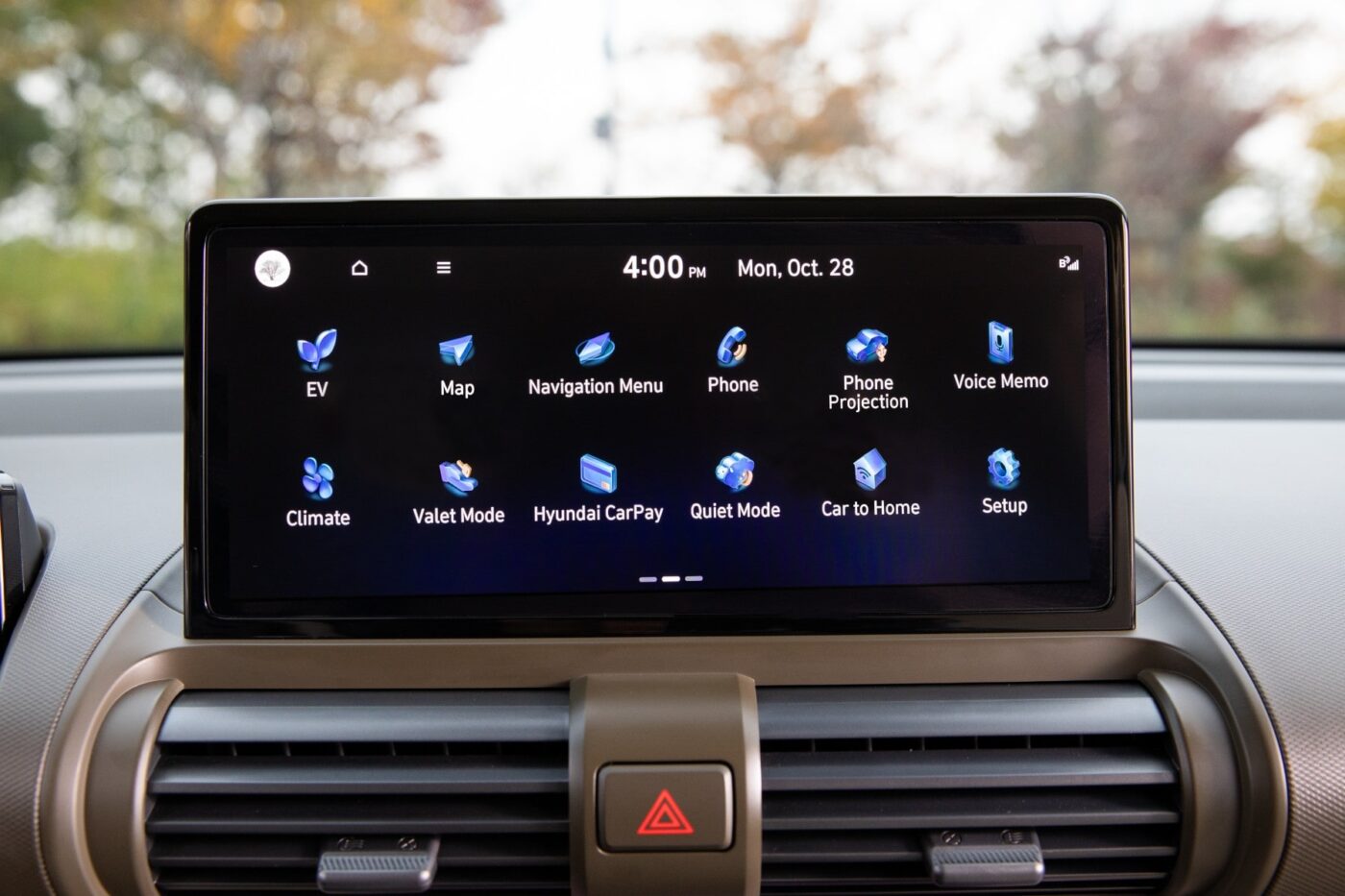
The backrests of the front seats can also be folded down. Even if the driver’s seat remains in the standard position, it should be possible to fit a 2.20-metre-long surfboard in the small car. If the driver’s seat is also folded down when stationary, you can also sleep with a mattress in the Inster. Another scenario: the front passenger seat can be folded down when the vehicle is charging. With an attachment available as an accessory, the folded seat then becomes a table for working or eating from the rear seat.
There are inserts with large plastic screws in the doors, which initially only look like a design element. In fact, you can also obtain add-on parts from Hyundai accessories (or, with a little work, from your own 3D printer). One practical feature is a card holder for two of the most frequently used charging cards and a parking ticket that you have just pulled out at the barrier.
Even though it has the charging port at the front in front of the driver (like the Kona Electric), the Inster is not related to any of the previous electric Hyundais. The technical basis is provided by the small car Casper built in Korea, which is limited to a length of 3.60 metres and a width of 1.60 metres due to the ‘light car’ category in South Korea – only then are the tax benefits available for these vehicles. In order to accommodate the required battery size in the narrow vehicle, Hyundai has stretched the Casper by more than 20 centimetres to make it the Inster. However, at 3.83 metres long and 1.61 metres wide, it is still smaller than the competitor models mentioned in this article. However, at 2.58 metres, the stretched wheelbase with this exterior length is impressive. For comparison: even the 4.30 metre long Kia EV3 is only 2.68 metres, but is significantly wider.
Inster leaves hardly any equipment wishes unfulfilled
In fact, this origin in the Casper combustion model also explains one aspect that is particularly striking in the truest sense of the word: the design. Many elements such as the round front headlights and the round design elements at the rear are strongly based on the Casper, and the interior is also very similar. However, in addition to the rounded shapes of the Casper, the Hyundai designers have also taken up the angular pixel design of the other electric models. Personally, I like the Casper better in direct comparison, without the angular pixel elements at the front and rear, the car looks more harmonious – but that is a matter of taste.
However, there is no debate when it comes to the overall package: from first impressions, Hyundai has done a good job here. Even the basic version is lavish and actually adequately equipped (except for the efficiency package), the probably best-selling ‘Trend’ equipment (25,900 euros with the small battery and 27,400 euros with the large battery) offers that decisive little bit more in terms of comfort and utility. And if you want, you can equip the Inster almost as well as a significantly larger and more expensive Kona or Ioniq 5 for 30,100 euros (large battery only).
And there will probably also be one or two attractive offers for the Inster on the leasing market over the course of the year. Hyundai itself is entering the race with leasing instalments starting at 199 euros, but dealers have already advertised the first examples in the 119 euro range on corresponding internet platforms.

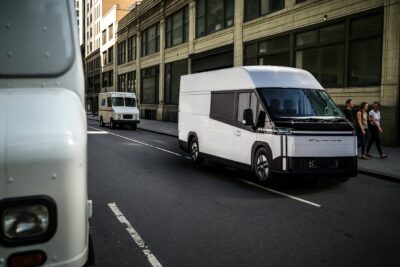

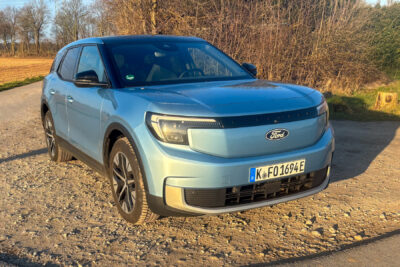
1 Comment